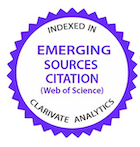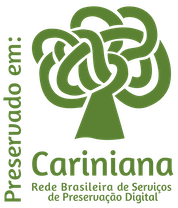Morfologia da laringe e traqueia de gambás (Didelphis sp.)
DOI:
https://doi.org/10.5216/cab.v14i2.17044Palavras-chave:
Anatomia animalResumo
Muitas espécies de gambás têm sido criadas e utilizadas em laboratórios, abrindo um amplo campo para o estudo e o conhecimento dos hábitos, doenças, dieta e reprodução desses animais. Esta pesquisa teve como objetivo descrever a morfologia macroscópica e microscópica da traqueia e laringe de gambás (Didelphis sp.). A traqueia e laringe dos gambás foram extraídas e mensuradas com o uso de paquímetro de precisão e as cartilagens da laringe foram separadas e processadas pelas técnicas rotineiras de histologia e coradas utilizando-se Hematoxilina eosina, Picrossírius e Tricrômio de Masson. A laringe pode ser divida em: cricóide com forma em “V”, tireoide em forma de escudo, aritenóide em forma de concha e epiglote em forma de folhas, as três primeiras são formadas de cartilagem hialina e a última, de cartilagem elástica flexível. A traqueia teve formato cilíndrico sendo constituída por 25 anéis traqueais cartilaginosos incompletos com forma de “C” semelhante aos anfíbios, serpentes, lagartos e suínos e diferente dos animais domésticos, possui também glândulas mucosas e tecido muscular liso ligando os anéis entre si.
PALAVRAS-CHAVE: anéis traqueais; aritenóide; cricóide; epiglote; tireoide.
Downloads
Publicado
Como Citar
Edição
Seção
Licença
Copyright (c) 2013 Ciência Animal Brasileira / Brazilian Animal Science

Este trabalho está licenciado sob uma licença Creative Commons Attribution 4.0 International License.
Autores que publicam nesta revista concordam com os seguintes termos:
- Autores mantém os direitos autorais e concedem à revista o direito de primeira publicação, com o trabalho simultaneamente licenciado sob a Licença Creative Commons Attribution que permite o compartilhamento do trabalho com reconhecimento da autoria e publicação inicial nesta revista.
- Autores têm autorização para assumir contratos adicionais separadamente, para distribuição não-exclusiva da versão do trabalho publicada nesta revista (ex.: publicar em repositório institucional ou como capítulo de livro), com reconhecimento de autoria e publicação inicial nesta revista.
- Autores têm permissão e são estimulados a publicar e distribuir seu trabalho online (ex.: em repositórios institucionais ou na sua página pessoal) a qualquer ponto antes ou durante o processo editorial, já que isso pode gerar alterações produtivas, bem como aumentar o impacto e a citação do trabalho publicado (Veja O Efeito do Acesso Livre).






























